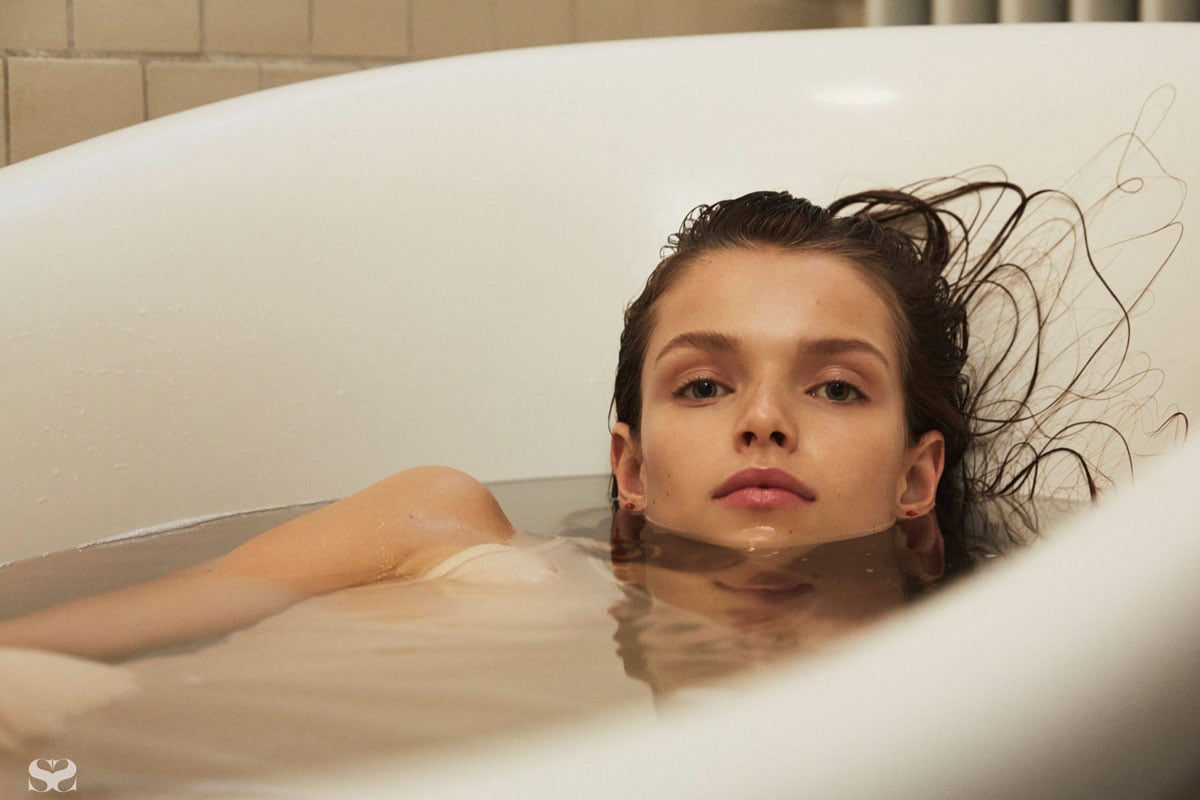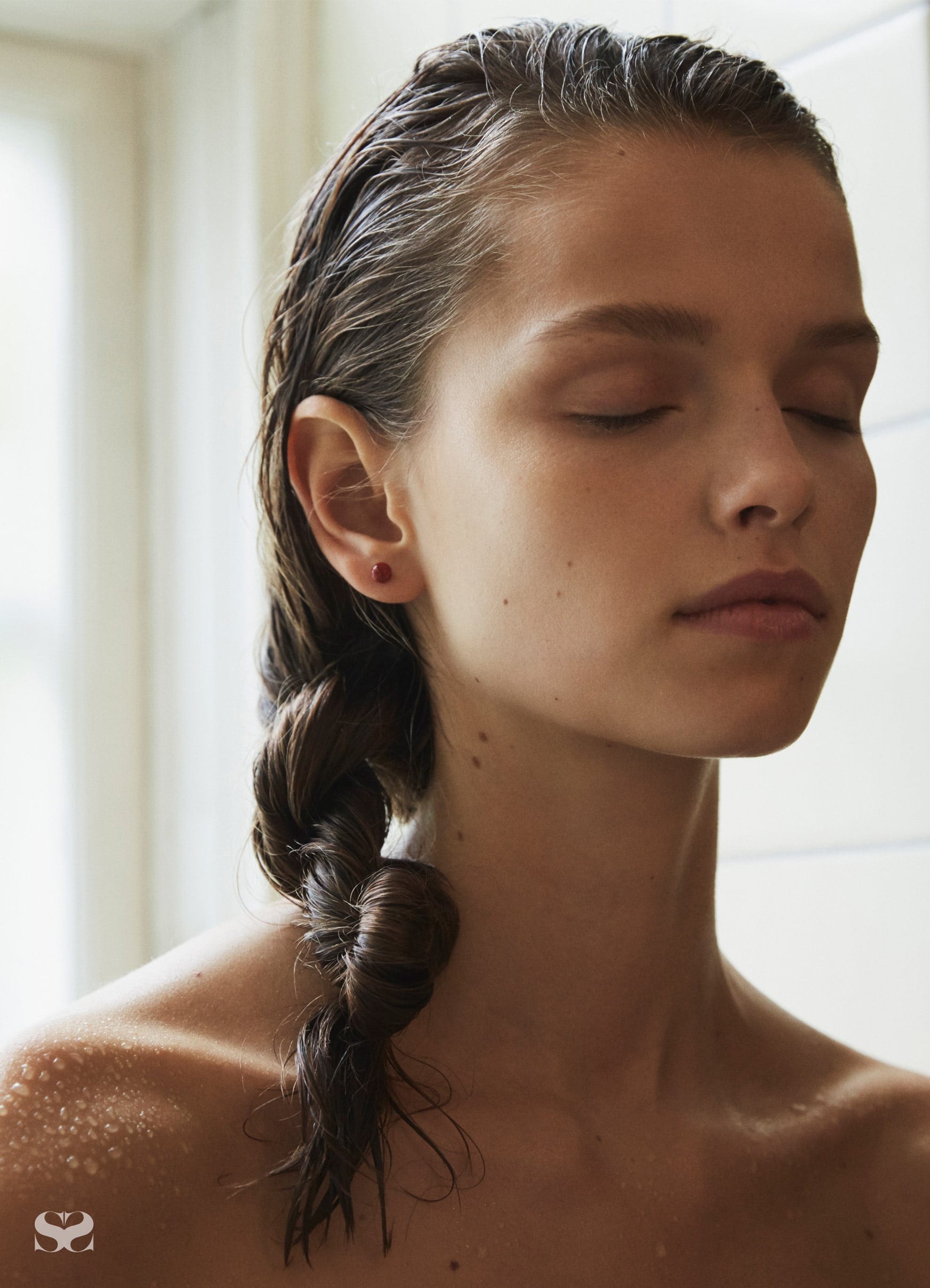
I discovered the ritual of bath and contrast therapy in 2012 on a trip to Budapest. The tour group I was travelling with paid a visit to one of Budapest's many hammams. I was 21 and had never heard of a hammam – or a Turkish bath as they're sometimes called. As soon as I stepped into the beautifully tiled, cavernous room with magnesium pools and steam rooms, I instantly fell in love with this traditional Middle Eastern practice. It offered me a sense of relaxation and mental clarity that is hard to find.
That moment sent me on a quest for more bathing experiences. The black soap and steam of the hammams across Morocco. The coal, dry saunas and cold plunges of Scandinavia. The hot springs and onsens of Japan. Each experience teaching me more and more about the holistic benefits of bathing therapy.
At last, bathing therapy has finally caught on in Western countries and bath houses have started popping up all over Australia. There's likely an infrared sauna on your block. But there are still only a few that offer the full suite with saunas, cold plunge and warm mineral pools - and if you want to get the full range of benefits that bath therapy offers, it can be beneficial to have all three.
"The combination of hot and cold therapy, known as contrast therapy, is powerful because it creates a cyclical effect on the body, stimulating both the circulatory and nervous systems," says Kate Smith, instructor at Trinity Curated Wellness.
I recently spoke to Smith – who runs the breathwork and bathe sessions at Trinity, one of Australia's leading holistic wellness centres – to understand more about the practice, its benefits and how best to experience the positive impacts of bathing and particularly contrast therapy.
She explains how bathing fosters a connection between mind and body, and why so many elite athletes are turning to this ancient ritual for optimal performance.
What exactly is bath therapy or contrast therapy?
Bath therapy, or contrast therapy, refers to the practice of alternating between hot and cold exposures, typically through the use of saunas, hot baths, and cold plunge pools or ice baths. The core principle is to alternate between hot and cold temperatures to stimulate various physiological responses in the body. This practice is often used to improve circulation, reduce muscle soreness, enhance recovery, and promote overall wellness.
What are the benefits associated with cold plunge/ice bath therapy? Why is it so popular with elite athletes?
Cold plunge or ice bath therapy has gained widespread popularity among athletes due to its potential for enhancing recovery and improving physical performance.
It can reduce muscle inflammation because cold exposure helps constrict blood vessels which helps with muscle swelling after intense physical activity. Then, once the body warms up again, blood flow increases, which helps to flush out waste products like lactic acid and bring in nutrients to the muscles for repair. This can also assist with faster recovery too.
It can assist with pain relief by numbing nerve endings, which may offer temporary relief from soreness or injury.
Then there's the decreased risk of injury. Some studies suggest that regular use of cold exposure can enhance tissue repair and reduce the risk of future injury. A 2016 study published in Frontiers in Physiology suggests that cold water immersion after exercise can help reduce muscle soreness and accelerate recovery. Also, a 2020 systematic review in Sports Medicine highlights the positive effects of cold-water immersion on muscle recovery and performance.

Are there similar benefits to using a sauna?
Yes, saunas offer a different set of benefits, but they are also valuable for athletic recovery and overall wellbeing.
Increased circulation. The heat from the sauna causes blood vessels to dilate, improving circulation. This can help with muscle relaxation and the delivery of oxygen and nutrients to tissues.
Saunas help with detoxification as sweating in a sauna helps to expel toxins from the body through the skin. The extent of detoxification is still debated – but many believe that sweating can help the body eliminate waste products.
There's a muscle relaxation benefit since heat can reduce muscle tension and promote a sense of relaxation, which may be beneficial after intense physical activity. And also, there's improved cardiovascular health. Regular sauna use has been linked to improved cardiovascular function. A 2015 study published in JAMA Internal Medicine found that frequent sauna use was associated with a reduced risk of heart disease and stroke.
Why are hot and cold therapies so powerful when used together for contrast therapy?
The combination of hot and cold therapy, known as contrast therapy, is powerful because it creates a cyclical effect on the body, stimulating both the circulatory and nervous systems.
It works using through vasoconstriction and vasodilation, Essentially, cold exposure causes blood vessels to constrict, reducing blood flow to muscles and tissues. Heat exposure causes blood vessels to dilate, promoting increased blood flow. This alternating process helps improve circulation, flush out toxins, and deliver nutrients to tissues more efficiently.
There's also an endorphin release too. Both heat and cold therapies can trigger the release of endorphins, the body’s natural painkillers, which contribute to an overall feeling of wellbeing.

If you hate the cold like me, can you still get the full array of benefits from saunas or hot baths alone? Or do you need the contrasting temperatures?
You can still receive significant benefits from using saunas or hot baths alone, especially for relaxation, detoxification, and improving circulation. If you dislike the cold, there are still many reasons to use heat therapy on its own.
As mentioned, saunas improve circulation, relax muscles, promote detoxification, and support cardiovascular health. Hot baths can have similar benefits, especially for easing muscle tension and improving flexibility. Even without the cold exposure, regular use of heat can have a positive impact on mental health by reducing stress, improving sleep, and promoting relaxation.
However, contrast therapy appears to provide a broader range of benefits, especially for physical recovery. If you can gradually acclimate to cold exposure, you might start to experience the full spectrum of benefits from contrast therapy.
Cultures like those in Scandinavia and Japan have been in cold/hot bathing for years, and why is it finally catching on in Western countries?
In cultures such as those in Scandinavia and Japan, cold and hot bathing traditions are deeply embedded in social and spiritual practices.
In Scandinavia, the sauna is a centuries-old tradition, often used for both physical cleansing and social bonding. Cold plunges are typically followed by sauna use to improve circulation and aid in relaxation.
In Japan, the onsen (hot spring bath) is not only a way to relax but also a spiritual practice that connects individuals with nature.
In Western countries, the rise of wellness culture, a growing interest in holistic health practices, and the increasing popularity of self-care rituals have led to the adoption of these therapies. The scientific research backing the benefits of cold and heat therapy, especially in the context of sports recovery, has also helped bridge the gap. At Trinity Curated Wellness we particularly love the social bonding element and feel like bathhouses are becoming a great new way for people to connect, in a healthy and different setting.
If using a cold plunge pool, how long do you recommend for a plunge? How often should you rotate between pools and the sauna?
When incorporating a cold plunge pool into a hot-cold circuit (contrast therapy), the typical approach follows a pattern of alternating between hot and cold exposures to stimulate circulation, enhance muscle recovery, and promote relaxation. It differs from bath house to bath house, but here’s a general structure for how we instruct people for the circuit at Trinity Curated Wellness.
- First heat exposure (sauna) for 10-15 minutes – The sauna should be warm enough to make you sweat but not so hot that it becomes unbearable. In our bathhouse, the sauna typically sits at about 88°C.
- Cold plunge for 3-7 minutes – After the heat exposure, immerse yourself into the cold plunge pool or ice bath. The temperature typically ranges between 4-10°C. The cold constricts blood vessels and reduces inflammation, helping to flush out waste products and reduce muscle soreness.
- Warm-up phase (warm mineral bath) for 3-7 minutes – After the cold plunge, you can either take a warm shower or soak in the warm mineral bath to gradually bring your body temperature back to normal. This phase can feel soothing and help ease the shock of the cold exposure.
- And then, repeat!
Depending on your goals and tolerance, you can repeat the hot-cold cycles 2-3 times, or more if desired. Some people might do just 1-2 cycles, while others may do up to 4-5 cycles..
The typical duration for a cold plunge is between 3 to 7 minutes. It's important to start slowly and build up tolerance, especially if you are new to cold therapy. Many people begin with less time, like even 30 seconds or 1-2 minutes and gradually increase the time as they adapt.
The ideal frequency of alternating between cold plunges and sauna use depends on individual goals.For recovery we recommend 2-4 times per week. For general wellness, once or twice a week. For intense athletes, after every intense workout or competition, alternating between the sauna and cold plunge can be used for optimal recovery.

Are the benefits purely physical? Or are there mental health benefits too?
The benefits of bath therapy are both physical and mental. Physically, cold and hot therapies improve circulation, reduce muscle soreness, and support recovery. Mentally, they can help reduce stress, improve mood, and promote relaxation. Heat exposure, in particular, has been shown to trigger the release of endorphins, which can improve mental well-being.
A 2018 study in the journal Psychology of Sport and Exercise found that sauna bathing had a positive effect on mental health, reducing feelings of anxiety and depression. The increase in dopamine levels following a cold plunge (or cold exposure in general) can be significant, although the exact amount varies depending on factors like the duration of the cold exposure, the temperature of the water, and individual tolerance levels.
When you immerse yourself in cold water, your body undergoes a series of physiological responses including "cold shock" that can lead to an increase in dopamine, a neurotransmitter associated with mood, motivation, and the reward system. There are a number of studies to support this including one in the International Journal of Circumpolar Health (2006) and in the Journal of Clinical Investigation (2009).
What's your favourite thing about bath therapy?
The holistic connection it fosters between mind and body. The physical benefits of improved circulation, reduced inflammation, and relaxation are powerful, but the mental clarity and stress relief that come from alternating hot and cold therapies are equally profound. It’s a simple yet effective practice that combines ancient wisdom with modern science to enhance overall wellbeing.
What can we learn from this wellness practice?
From bath therapy, we can learn the importance of self-care and prevention. The practice highlights the interconnection between mind and body, showing us that taking time to care for our physical and mental health can prevent issues down the line. In today’s fast-paced world, rituals like contrast therapy offer an accessible way to slow down, focus on recovery, and invest in our long-term health.
What advice would you give to someone wanting to start contras and bath therapy?
Start slow. If you’re new to cold exposure, begin with short, tolerable durations and gradually increase the time as you get accustomed.
Listen to your body. Pay attention to how your body responds. Don’t push yourself too hard, and if you feel dizzy or lightheaded, stop the session immediately.
Stay hydrated. Hot and cold exposure can lead to dehydration, so make sure to drink plenty of water before, during, and after your sessions.
Make it a routine. To reap the full benefits, try to incorporate contrast therapy into your regular routine. Aim for at least 2-3 sessions a week for optimal recovery and mental clarity.



